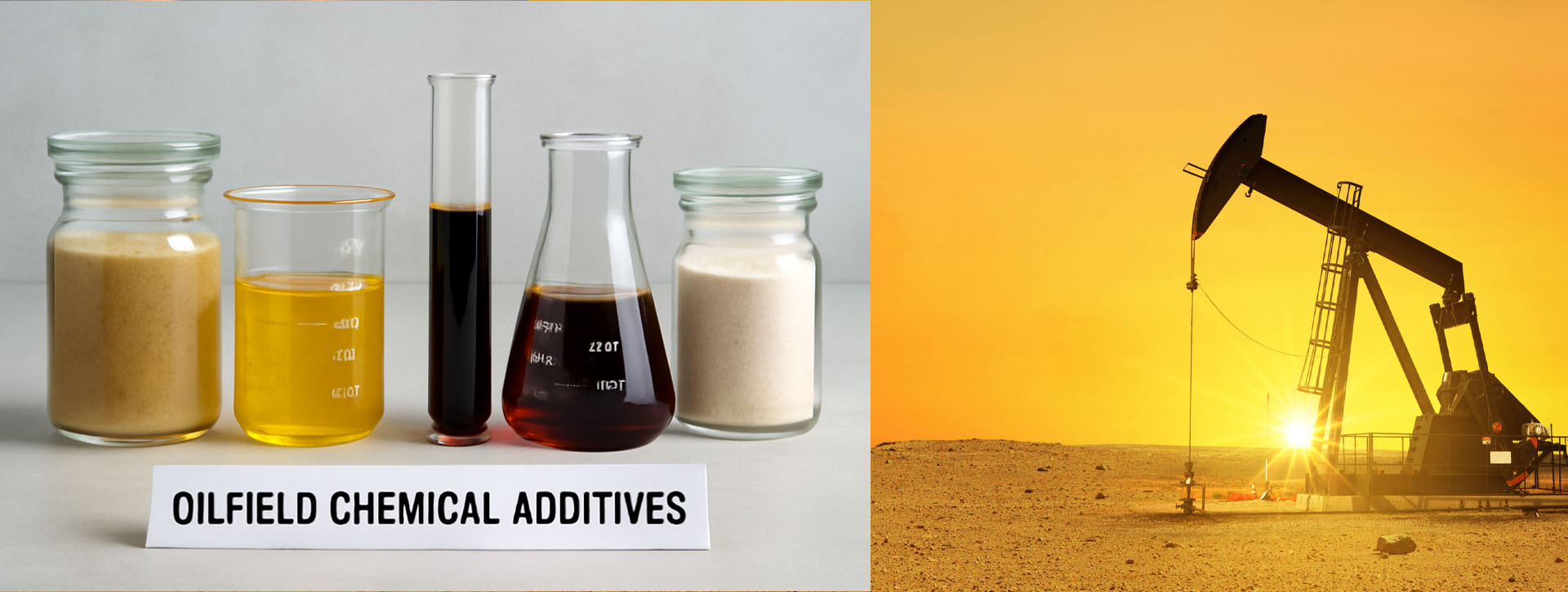What are oilfield additives?
Oilfield additives are a group of specialty chemicals used in the various stages of oil and gas exploration, extraction, and production to improve efficiency, performance, and cost-effectiveness. These additives provide a range of functions, such as enhancing drilling operations, increasing production rates, reducing corrosion, and addressing environmental concerns.

How do oilfield additives work?
Oilfield additives play specific roles in different stages of the oil and gas industry:
Drilling fluids additives: Improve the performance, stability, and efficiency of drilling fluids, controlling factors such as viscosity, fluid loss, lubricity, and shale inhibition.
Cementing additives: Enhance the cement slurry properties and provide better sealing, zonal isolation, and durability in well construction.
Production chemicals: Optimize oil and gas production by addressing issues such as emulsions, foaming, scale, and corrosion.
Well stimulation additives: Improve well productivity by increasing flow capacity through techniques like hydraulic fracturing and matrix acidizing.
Enhanced Oil Recovery (EOR) additives: Improve the recovery of oil from reservoirs through processes like water injection, gas injection, or chemical flooding.
UNPChemicals provides one-stop additive solution for oilfield chemicals, If you are looking for oilfield chemical additives, feel free to contact us.
Challenges of oilfield operations
Harsh operating conditions: Oil and gas extraction often take place in environments with challenging conditions, such as high temperature, pressure, or salinity, making it difficult to develop additives that function effectively in these environments.
Environmental concerns: The oil and gas industry faces strict environmental regulations, making it essential to develop environmentally friendly and biodegradable additives to address impacts on water, soil, and air quality.
Cost-effectiveness: Oilfield projects often require significant investments, and the development and use of additives must balance performance improvements with the associated costs to maintain economic viability.
How to select oilfield additives?
When selecting oilfield additives, consider the following factors:
Application: Choose additives based on the specific stage, process or operation in the oil and gas industry for which they will be used, such as drilling, cementing, production, stimulation, or EOR.
Performance requirements: Evaluate the desired properties and performance enhancements that the additive needs to provide, such as viscosity control, corrosion inhibition, scale prevention, or fluid stability.
Compatibility: Ensure that the selected additives are compatible with other chemicals and materials used in the oilfield operations.
Environmental impact: Consider the environmental impact of the additives, favoring those with low toxicity, biodegradability, and minimal adverse effects on water, soil, or air quality.
Cost-effectiveness: Evaluate the economic feasibility of using the additive in terms of its performance benefits versus the associated costs.
By carefully considering these factors, oil and gas operators can select appropriate additives to improve the efficiency, productivity, and safety of their operations while minimizing the environmental impact and maximizing cost-effectiveness.